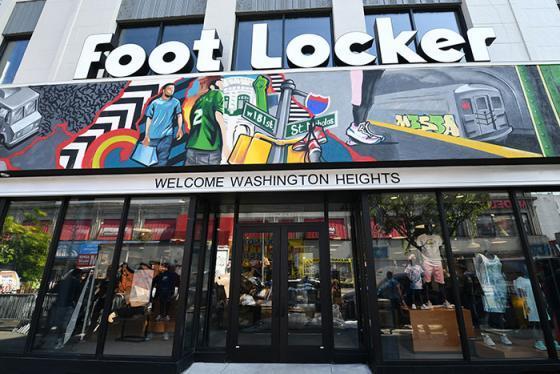Foot Locker shifting vendor mix: less Nike, more DTC; opening more off-mall stores
Foot Locker expects its revenue to fall this year as it expects it will no longer be able to sell as many products from its top vendor, Nike.
The specialty athletic retailer said that beginning in the fourth quarter of 2022, no single vendor will represent more than 55% of its total supplier spend, down from 65% in the year-earlier period. As a result, no single vendor is expected to represent more than approximately 60% of total purchases for the year, down from 70% in 2021, and 75% in 2020.
The change reflects the accelerated shift by Nike to sell more of its product through its own stores and website. In response, Foot Locker is ramping up its ongoing brand and DTC efforts. The company will continue to expand in apparel and broaden its product mix across brands and categories. It recently launched a new womenswear brand.
Foot Locker has also expanded its portfolio with two acquisitions, including WSS, a California-based athletic footwear and apparel retailer that operates 93 off-mall stores and serves a largely Hispanic consumer base in underserved communities. It also acquired Japanese athletic streetwear brand atmos.
“We made significant progress diversifying our brands, categories and channels in 2021, as well as expanding our customer base across demographics and high-growth geographies with the acquisitions of WSS and atmos,” said chairman and CEO Richard Johnson. “Our journey to diversify our mix of business and expand our reach as a house of brands and banners is ongoing.”
WSS is expected to reach $1 billion in annual sales by 2024, supported by accelerated store openings and anticipated strong same-store sales growth. The company expects to grow atmos annual sales by approximately 50% to nearly $300 million during the next three years by scaling in existing markets and expanding internationally.
In other initiatives, Foot Locker has increased its planned rollout of its community-centric “power stores” format to approximately 300 locations during the next three years.
[Read More: First Look: Kids Foot Locker debuts play-focused store concept]
Foot Locker plans to implement a cost reduction program expected to generate savings of approximately $200 million on an annualized basis. The company said it would provide more details about the program, which will start shortly, during its first-quarter earnings call.
Foot Locker posted net income of $103 million, or $1.02 a share, for the quarter ended Jan.29, down from $123 million, or $1.17 a share, in the year-ago period. Adjusted earnings per share were $1.67, well ahead of the $1.44 analysts were looking for.
Sales rose 6.9% to $2.341 billion, ahead of estimates for $2.321 billion. Comparable-store sales increased by 0.8%, with apparel significantly outpacing footwear.
For 2022, Foot Locker expects adjusted EPS to range from $4.25 to $4.60, compared with analysts’ estimates of $6.41. It expects 2022 sales to fall 4% to 6% and for same-store sales to fall 8% to 10%.
The company is raising its quarterly dividend by 33% to $0.40 a share and its board has approved an up to $1.2 billion share buyback program.
During the fourth quarter, the company opened 60 new stores, acquired 38 Atmos stores, remodeled or relocated 115 stores and closed 76 stores. Additionally, it closed 120 Footaction stores, of which 45 stores were converted to other banners.
As of January 29, 2022, Foot Locker operated 2,858 stores in 28 countries in North America, Europe, Asia, Australia, and New Zealand. In addition, 142 franchised stores were operating in the Middle East and Asia.
“As we look to 2022, Foot Locker, Inc. is operating from a strong financial position and we continue to benefit from substantial flexibility in our real estate portfolio, allowing us to pivot our store footprint more easily as we amplify and optimize our omnichannel offerings,” said CFO Andrew Page. “With the help of our external partners, we are looking to drive even more efficiency as we ensure alignment of our capital spend, cost structure and organization design in support of our strategic imperatives."



